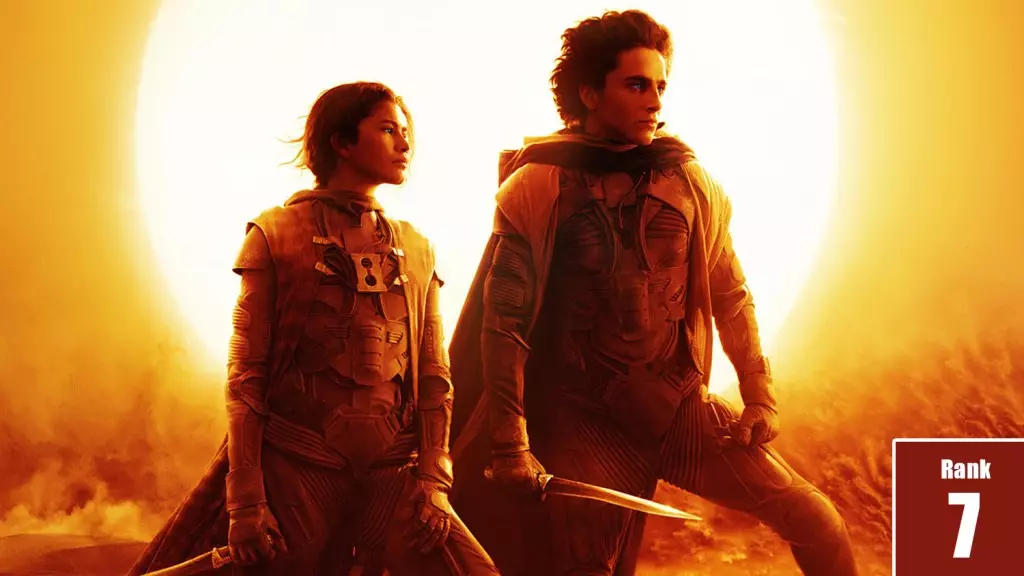The stark reality of the film industry is that box office revenues are just the tip of the iceberg. The Deadline’s Most Valuable Blockbuster tournament showcases the intricate layers of profitability, highlighting that the traditional metrics used by studios no longer suffice in today’s hybrid media environment. Major players like Disney and Warner Bros must now navigate a convoluted landscape where streaming services act not just as distributors, but also as potential competitors. This is a challenge that creates an astonishing tension within the industry, as profitability becomes a multifaceted equation that considers downstream revenues and subsequent home windows. The studios’ struggle to adapt to this new paradigm is unsettling and speaks volumes about the shifting power dynamics.
The luck of the draw when it comes to which films become blockbusters often feels arbitrary. However, it’s more accurate to frame it as a battle of strategic maneuvering. The success of films like “Dune: Part Two” may appear straightforward on the surface, but a deeper analysis reveals the extensive calculations that go into projecting its potential earnings. Different markets are treated with varying degrees of scrutiny, as studios try to account for unpredictable factors like a global pandemic and streaming releases. The revelations from this year’s tournament illustrate just how much discretion studios must exert to maintain investor confidence while also pleasing audiences.
Streaming: The Unpredictable Variable
Streaming services loom over the entire blockbuster landscape like a double-edged sword. Companies like Apple and Amazon have decided to venture into theatrical releases, altering the standard framework by which success is measured. This has created a parallel universe steeped in obscure metrics that are not readily available to traditional film studios. While traditional media companies cling to established guidelines for profitability, newer streaming giants are sculpting their own definitions of success, often diverging significantly from the traditional ones. They can afford to take risks that legacy studios simply can’t, which makes it harder to accurately gauge a film’s performance.
Moreover, the choice to exclude streaming-produced films from the tournament due to their unique measuring stick raises questions. One could argue that this decision is a shortsighted attempt to preserve the old guard’s status quo, fearfully ignoring the inevitable progress of a shifting landscape. At its core, this highlights a disdain for genuine innovation in favor of preserving legacy. This is not simply a fight over box office numbers; it’s a battle for the future of cinematic storytelling itself, where digital and theatrical experiences converge in ways previously deemed unimaginable.
The Role of Star Power
The marketing dynamics behind films like “Dune: Part Two” cannot be overstated, revealing the crucial role that star power plays in ticket sales. With 41% of moviegoers citing the cast as their primary reason for attending, it becomes evident that the star appeal resonates strongly not just with die-hard fans but also with new audiences, especially younger viewers. This pivot towards star-centric marketing strategies signals a return to traditional values in film promotion, which many hoped would evolve past reliance on big names.
From a center-right perspective, this creates a dilemma: while it’s understandable for studios to leverage star power, it could also stifle emerging talent in favor of established actors. The question must be raised: can the industry afford to keep taking this route, or will it eventually lead to a depletion of new ideas and fresh perspectives? Although blockbuster cinema thrives on familiarity, the danger lies in sacrificing innovation for immediate returns.
Financial Maneuvering in Production
The financial intricacies behind productions like “Dune: Part Two” also illustrate how obscured perceptions of worth can lead to inflated budgets, which are not necessarily reflective of true market values. With budgets soaring to a staggering $190 million, stakeholders are racing to justify expenses to investors by projecting hypothetical earnings unguided by current realities. While it is commendable that Legendary attempted to keep director Denis Villeneuve’s artistic vision intact, one has to question whether such significant investments can be sustained in a landscape that’s more volatile than ever.
It’s a precarious balancing act: studios are tasked with meeting not just the expectations of the audience but also their investors—which is increasingly tough when yields are contingent on ever-fluctuating streaming metrics. The fallout of this financial maneuvering could either uplift or obliterate careers. The film industry, as it stands, faces an urgently pressing need for a paradigm shift toward transparent financial practices, lest it risks losing its essence amidst the chaos of modern commercialization.
In essence, the Deadline’s research unveils a web of complexities in modern cinema, driven equally by profit motives and artistic integrity. The challenges are numerous, but the pathway to a sustainable future in film hinges on acknowledging this interplay and refining the processes that govern it—not merely preserving a nostalgic model that once worked but is now outdated.

